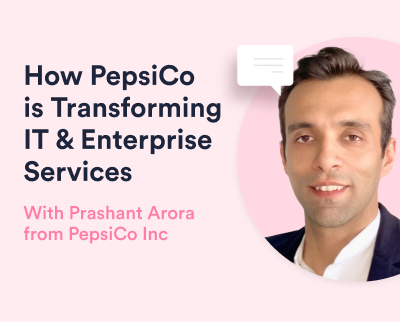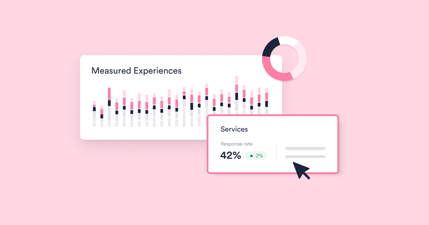An Interview with Prashant Arora: Driving Transformative IT and Global Business Service Experiences at PepsiCo
Prashant Arora, Director of Strategy and Transformation at PepsiCo, leads global service management and digital experience efforts. Here, he shares insights into PepsiCo’s approach to IT Experience Management (ITXM) and the evolution toward a holistic, experience-driven IT culture.

Q: Prashant, thanks for joining us today. Can you tell us about your role at PepsiCo and your approach to ITXM?
Absolutely. At PepsiCo, I oversee the global service desk and our digital experience, which includes a wide array of products and services. Our primary focus is evolving from traditional IT metrics, like SLAs, to a more experience-centric approach that prioritizes what truly matters to our employees and their daily interactions with technology. This shift has required us to think beyond resolving IT tickets; it's about improving every touchpoint across our digital landscape, from portals to mobile apps.
Q: Why is focusing on employee experience crucial in today's IT landscape?
It's vital because the experience affects productivity and overall employee satisfaction. Traditional metrics—SLAs and KPIs—were designed for IT teams rather than the end users. They measure response times and resolution rates but don't reflect the employee's journey. For example, an employee may be frustrated by the time it takes to reach support, even if the issue is quickly resolved once they get help. We're now more focused on creating seamless experiences across all channels, whether chatbots, apps, or phone support.
Q: What strategies does PepsiCo employ to capture these experiences across different employee touchpoints?
Capturing experience is key. Many companies use surveys, but we go further by tracking interactions across multiple touchpoints. For instance, Gen Z employees prefer chat and mobile apps, while others rely on traditional phone support. We use this data to understand and improve the holistic experience, including factors like effort score, which measures how much time and effort it takes for an employee to get support.
Q: You mention "moments that matter." Can you elaborate on what those are in the IT context?
Certainly. "Moments that matter" are critical points in an employee's journey where IT can significantly impact their experience. For a new joiner, it might be receiving a fully set-up laptop on their first day. For others, it could be the ease of navigating a service portal or the response time in a high-stress situation. These are moments where IT services can either enhance or detract from their overall experience, so we aim to meet or exceed expectations consistently.
Q: That sounds transformative. Are there challenges in balancing traditional SLAs with a more experience-focused approach?
Yes, definitely. It's a cultural shift, especially for our external partners. SLAs, like ticket resolution times, are easier to measure. However, they don't always align with employee satisfaction, so we're introducing metrics like Net Promoter Score (NPS) to gauge experience impact. It can be challenging for partners to adapt to these less traditional metrics, but it's essential for an authentic, experience-driven culture.
Q: How does PepsiCo ensure these initiatives stick and are widely adopted?
Adoption is critical for success. We're very transparent about our metrics and the impact of these initiatives. We display live experience data on screens in high-traffic areas, giving everyone visibility into our performance. Another program we call "Hug at Work" encourages collaboration across teams to foster an experience-focused mindset. Additionally, we celebrate success with awards, like "Happiest Region of the Month," which has created a friendly, competitive spirit within the company.
Q: What's next in IT experience management for PepsiCo?
Looking forward, we aim to extend our experience management beyond IT to an end-to-end, enterprise-wide service experience in our Global Business Services. Whether it's HR, procurement, or facilities, employees should receive a unified, seamless experience across departments. Eventually, the goal is to bring the same excellence to our partners and customers, ensuring that every interaction with PepsiCo meets the highest standards.
Q: Do you have any advice for companies that haven't adopted an experience-driven IT approach yet?
Don't wait. The days of employees sticking around despite poor IT experiences are over. Today, employees, especially younger generations, expect their work tech to match the usability of consumer apps like Amazon or Netflix. It's a worthwhile investment that drives engagement and productivity, and companies prioritizing experience will have a clear advantage.
Q: Prashant, thank you for sharing these valuable insights. It's exciting to see how PepsiCo is transforming the IT experience.
Thank you! It's an exciting time for IT, and I believe a focus on experience can make a lasting impact not only on the organization but also on the lives of our employees.
Watch Prashant's whole presentation and other ITXM Summit 2024 sessions here.





